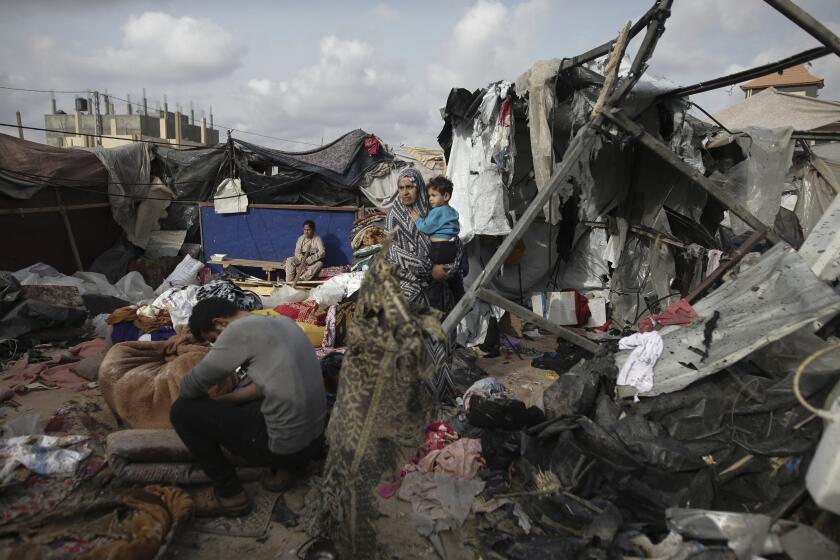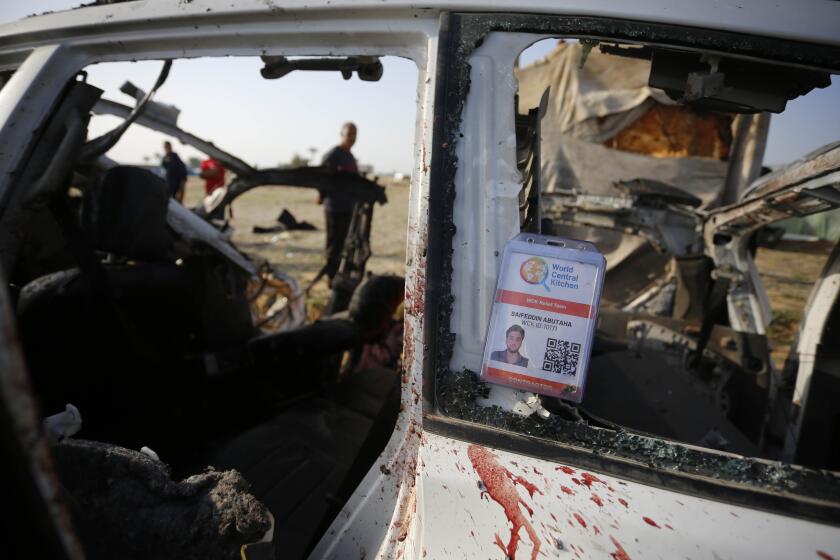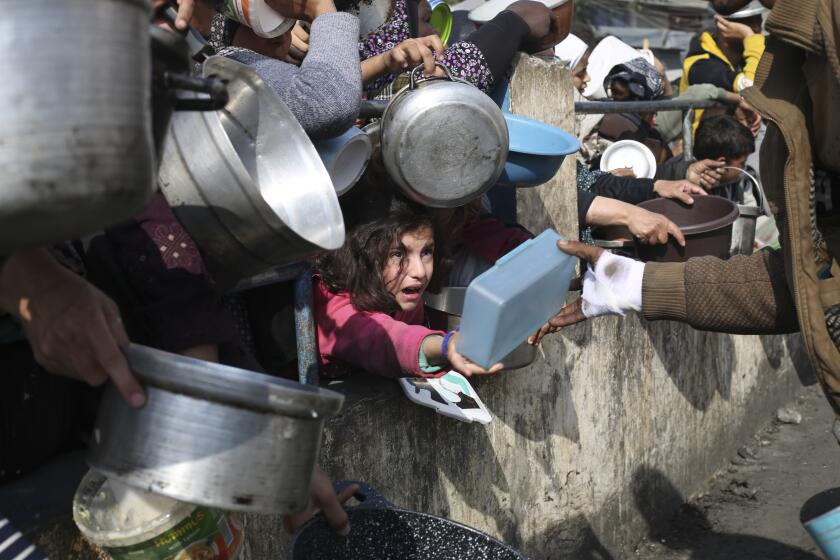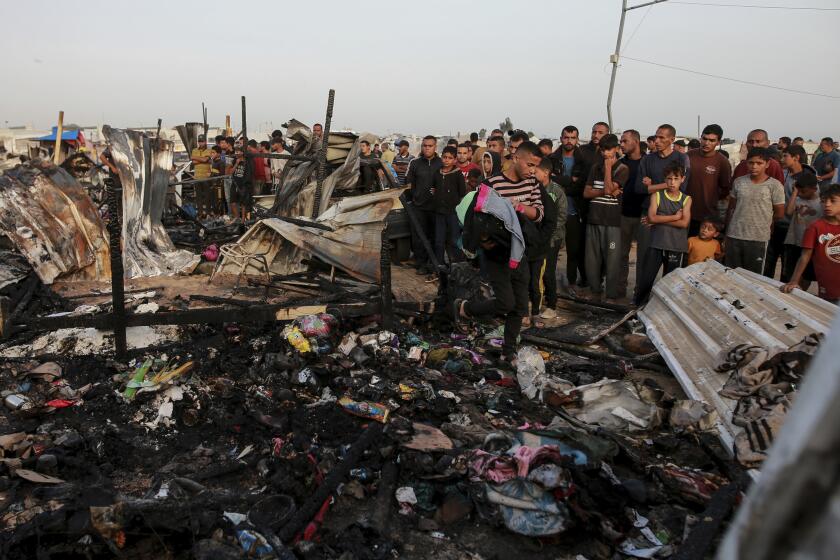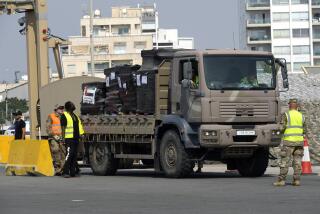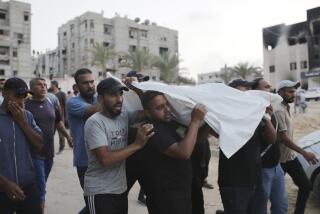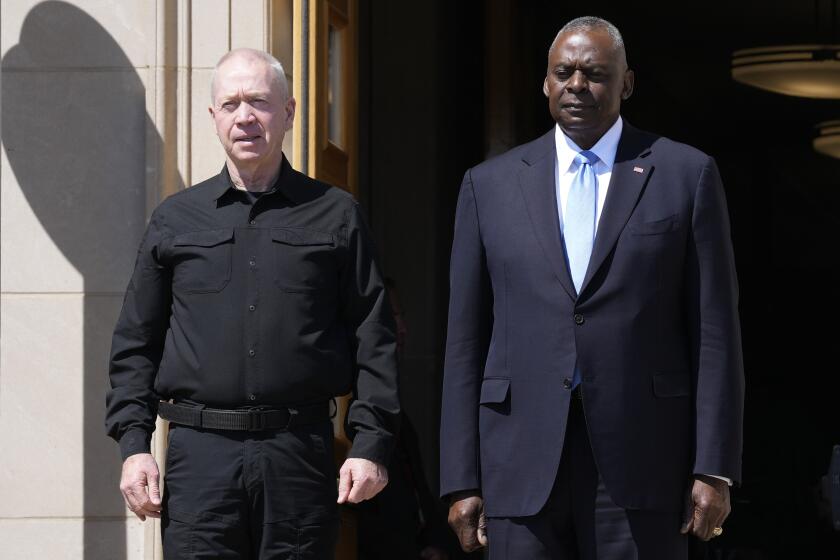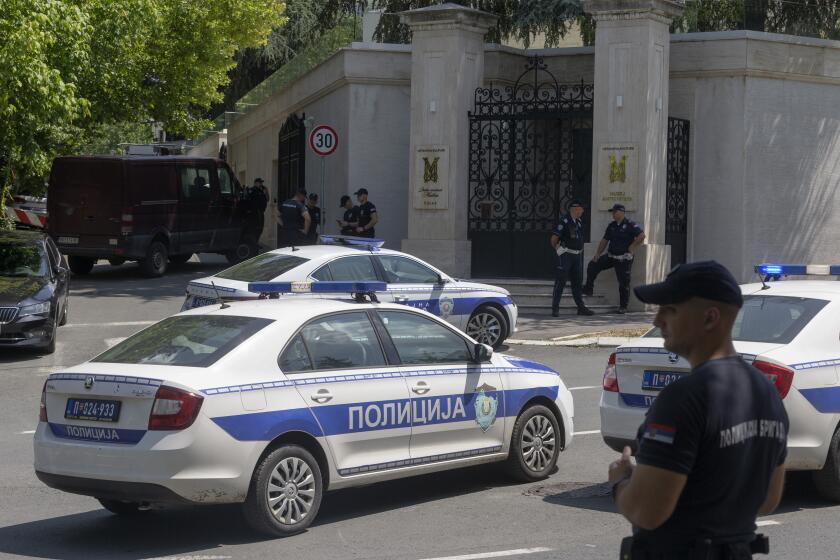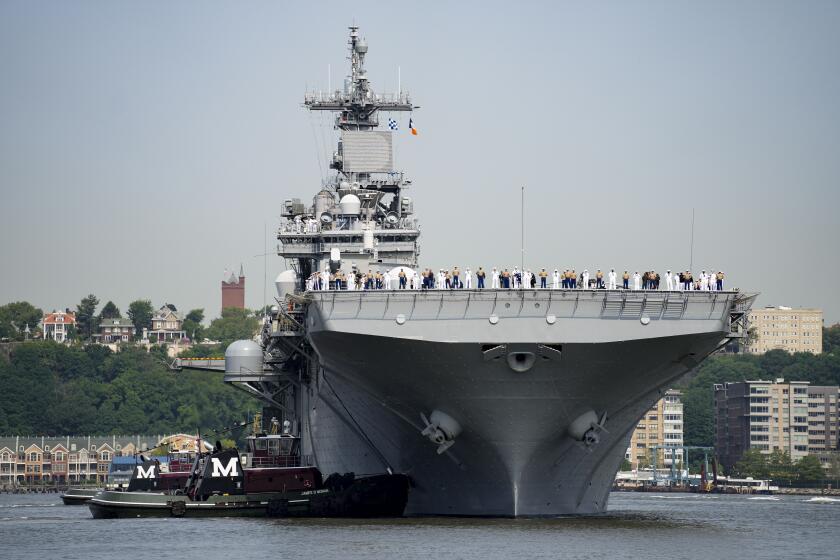‘We have nothing’: As Israel attacks Rafah, Palestinians live in tents, search for food
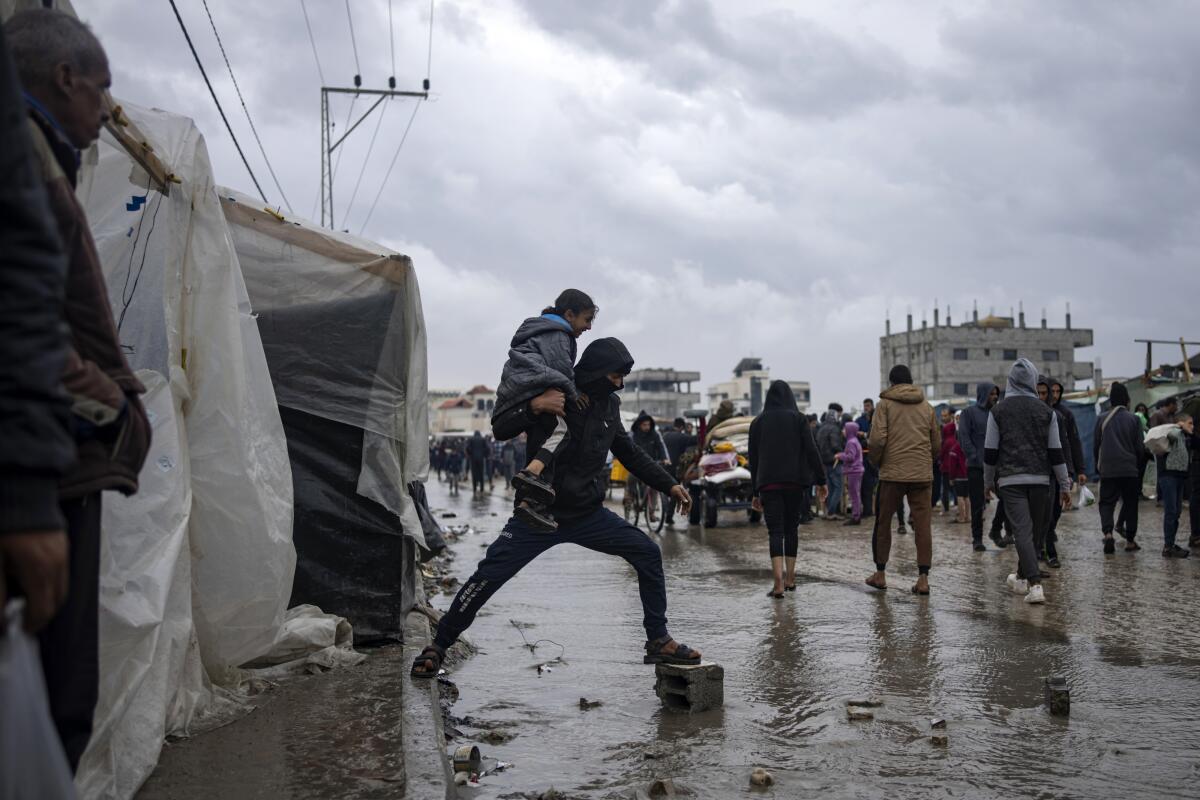
The tent camps stretch more than 10 miles along Gaza’s coast, filling the beach and spilling into empty lots, fields and streets. Families dig trenches to use as toilets. Fathers search for food and water. Children dig through garbage and wrecked buildings looking for wood or cardboard their mothers can burn for cooking.
Over the past three weeks, Israel’s offensive in Rafah has sent nearly a million Palestinians fleeing the city in the southern Gaza Strip and scattering across a wide area. Most have been displaced multiple times during Israel’s nearly eight-month-long war in Gaza, which is aimed at destroying Hamas but has devastated the territory and caused what the United Nations says is a near famine.
Monday night and Tuesday, Israeli shelling and airstrikes killed at least 37 people outside of Rafah, most of them sheltering in tents, pummeling the same area where strikes triggered a deadly fire days earlier in the camp for displaced Palestinians, according to witnesses, emergency workers and hospital officials.
The situation has been worsened by a dramatic plunge in the amount of food, fuel and other supplies reaching the U.N. and other aid groups to distribute to the population. Palestinians have largely been on their own to resettle and find the basics for survival.
Israeli army says it used small munitions in Rafah airstrike, and fire was caused by secondary blast
The Israeli military says an initial investigation into a strike that sparked a deadly weekend fire in Rafah has found the blaze was caused by a secondary explosion.
“The situation is tragic. You have 20 people in the tent, with no clean water, no electricity. We have nothing,” said Mohammad Abu Radwan, a schoolteacher. He shares a tent with his wife, six children and other family members.
“I can’t explain what it feels like living through constant displacement, losing your loved ones,” he said. “All of this destroys us mentally.”
Abu Radwan fled Rafah soon after the Israeli assault on the city began May 6 as bombardment neared the house where he was sheltering. He and three other families paid $1,000 for donkey carts to take them to the outskirts of Khan Yunis, less than 4 miles away, where it took a day living outdoors before they could assemble the materials for a makeshift tent. Next to the tent, they dug a toilet trench, hanging blankets and old clothes around it for privacy.
Families usually have to buy the wood and tarps for their tents, which can run up to $500, not counting ropes, nails and the cost of transporting the material, the humanitarian group Mercy Corps said.
Israeli authorities controlling all entry points into Gaza have been letting greater numbers of private commercial trucks into the territory, the U.N. and aid workers say. More fruits and vegetables can be found in markets, and prices on some have fallen, Palestinians say.
‘I just don’t know where we’ll go.’ It’s a question Palestinians ask over and over in Gaza as Israel ramps up bombardment after Hamas truce collapsed.
Still, most homeless Palestinians can’t afford them. Many in Gaza have not received salaries for months, and their savings are being depleted. Even those who have money in the bank often can’t withdraw it because there is so little cash in the territory. Many turn to black-market exchanges that charge up to 20% to give cash for transfers from bank accounts.
Meanwhile, humanitarian convoys with supplies for aid groups to distribute have fallen to nearly the lowest levels of the war, the U.N. says.
Previously, the U.N. was receiving several hundred trucks a day. Since May 6, the daily number has dropped to an average of 53, according to the U.N. Office for the Coordination of Humanitarian Affairs, or OCHA. Some 600 trucks a day are needed to stave off starvation, according to the U.S. Agency for International Development.
In the past three weeks, most of the incoming aid has entered through two crossings from Israel in northern Gaza and via a U.S.-built floating pier taking deliveries by sea. But that pier has suspended operations after damage from rough seas, three U.S. officials told the Associated Press on Tuesday.
The main crossings in the south, Rafah from Egypt and Kerem Shalom from Israel, are either not operating or are largely inaccessible to aid groups because of fighting. Israel says it has been letting hundreds of trucks through Kerem Shalom. But the U.N. has been able to collect only about 200 on the Gaza side over the past three weeks because of Israeli military restrictions, the expanding offensive, Israeli airstrikes and Hamas rocket launches, spokesperson Juliette Touma said Tuesday.
Staffers from World Central Kitchen, chef José Andrés’ humanitarian aid group trying to get food to Palestinians in Gaza, were killed in Israeli airstrikes.
Entry of fuel has fallen to about a third of what it was before the Rafah offensive, according to OCHA. That amount has to keep hospitals, bakeries, water pumps and aid trucks working.
The U.S. humanitarian group American Near East Refugee Aid “is having difficulty distributing what we are able to bring in to the people who need it, because there’s so little fuel for trucks,” spokesperson Steve Fake said.
Most of those fleeing Rafah have poured into a humanitarian zone declared by Israel that is centered on Muwasi, a largely barren strip of coastal land. The zone was expanded north and east to reach the edges of Khan Yunis and the central town of Deir al Balah, both of which have also filled with people.
“As we can see, there is nothing ‘humanitarian’ about these areas,” said Suze van Meegen, head of operations in Gaza for the Norwegian Refugee Council, which has staff operating in Muwasi.
Much of the humanitarian zone has no charity kitchens or food market; it has only a few field hospitals and smaller medical tents that can’t handle emergencies but pass out painkillers and antibiotics if they have them, according to Mercy Corps. “It’s just a matter of time before people begin to suffer greatly from food insecurity,” the group said.
The United Nations says it has suspended food distribution in the southern Gaza city of Rafah due to lack of supplies and insecurity.
The Muwasi area is mostly coastal dunes, with no water resources or sewage systems. With human waste deposited near the tents and garbage piling up, many people are suffering from diarrhea and diseases such as hepatitis, as well as skin allergies and lice, Mercy Corps said.
One aid worker who fled Rafah said he was lucky he could afford to rent a house in Deir al Balah. “You can’t walk” in the town from all the tents that have arisen, said the man, who was not authorized to speak to the press. Many people he sees in the street are yellow with jaundice, and “the stench is disgusting” from the sewage and garbage.
Israel says its offensive in Rafah is vital to its aim of destroying Hamas in Gaza after the group’s Oct. 7 attack, in which militants killed some 1,200 people and abducted around 250. Israel’s retaliatory campaign in Gaza has killed some 36,000, according to the Health Ministry there.
Aid groups have warned for months that an attack on Rafah would worsen Gaza’s humanitarian disaster. So far, Israel’s operations have been short of an all-out invasion, though fighting has expanded over the past three weeks from the eastern parts of Rafah to the central districts. A strike Sunday hit a tent camp in a western part of Rafah, causing a large fire and killing at least 45 people, according to health officials. Israeli Prime Minister Benjamin Netanyahu acknowledged that a “tragic mistake” had occurred.
Israel faces new condemnation over strikes on the southern Gaza city of Rafah that local health officials say killed at least 45 Palestinians.
Satellite photos shot Friday by Planet Labs PBC show dense new tent camps running the length of the coast from just north of Rafah to Deir al Balah. The ramshackle shelters are densely packed in mazes of corrugated metal and plastic sheets, blankets and bedsheets draped over wooden sticks for privacy.
Tamer Saeed Abu’l Kheir said he goes out every day at 6 a.m. to find water, usually returning around noon to the tent outside Khan Yunis where he and nearly two dozen relatives live. His three children, all under 10, are always sick, but he has to send them out to collect wood for the cooking fire, he says. He worries they’ll come across unexploded bombs in the wrecked houses.
His aging father has trouble moving so has to relieve himself in a bucket, and Abu’l Kheir has to regularly pay to transport him to the nearest hospital for kidney dialysis.
“Wood costs money, water costs money, everything costs money,” said his wife, Leena Abu’l Kheir. She broke down in sobs. “I’m afraid I’ll wake up one day and I’ve lost my children, my mother, my husband, my family.”
Shurafa, Magdy and Keath write for the Associated Press. Magdy and Keath reported from Cairo. AP correspondents Sarah El Deeb in Beirut, Fatma Khaled in Cairo and Mohammed Jahjouh in Muwasi, Gaza Strip, contributed to this report.
More to Read
Start your day right
Sign up for Essential California for news, features and recommendations from the L.A. Times and beyond in your inbox six days a week.
You may occasionally receive promotional content from the Los Angeles Times.
